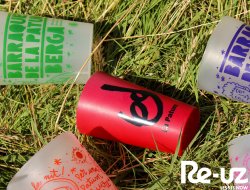The 3Rs: these are three, not one
For several years now, we have been listening to talk about the ecological triangle or the rule of three "R". It was in the 2004 G8 Summit where the 3R initiative was set for international programs. Subsequent summits and ministerial meetings put this topic on the table and it was discussed how to implement implementation actions globally. But who is certain is that the current productive and economic system involves the generation of more and more waste.
Although most waste and pollution is generated by large transnational corporations and the industrial sector, we, at the domestic level, can influence consumer patterns. So, it is necessary to be able to apply the 3R in our daily activity to generate less household waste. And in this sense we must have the order of prioritization of this ecological triangle.
Contrary to what many people and organizations believe, recycling is not the key to this system. Waste campaigns focus on recycling, but it must be emphasized that the best waste is the one that does not occur. As Professor José David Lara González explains, too many times the triangle of the limit of "recycling" has been reduced as if it were the only important answer for environmental conflicts. "The triangle is hierarchical and without this order, reduce and reuse are cleaner and more important than recycling.Recycling is the third option.In an idealized hypothetical case, if the reduction is made and reuse is possible that recycling is not necessary: it can be minimized or even it may not be necessary anymore ", explains Lara González in the article" Reduce, Reuse and Recycle "
In fact, during those years came ideas to actualize and complete this rule. This is the case of the author Walter Pardavé Livia who proposes the "10 R" by applying the triangle with the following environmental strategies: Redevelopment, Reformulation, Refabrication, Revalorization, Redesign (Reconception), Recompensation and Renewal. And again, in this article we will make an incise in the three basic premises, endowing them with value and bringing practical actions to make them reality.
Reduction
This is the first and most important concept of their 3R rule. It relates to the reduction of the consumption and that can go in some levels. We could say that this first rule could connect with some of the principles of Decrease since we would include here weakening consumerism and generating a conscience of responsible and environmental consumption. Or, a consumption that takes into account a few factors, between these environmental prices, and not just economic. How can we do it? Above all it is a matter of conscience and reorganization of the vital rhythms, and still we offer some advices.
- Use non-polluting transport or public transport instead of private transport.
- Energy consumption and responsible water at home and at work
- Reduce the consumption of toxic products
- Do not buy packaged products
Reuse
This second principle is related to the use of objects and their useful life. Another time, one must be aware of the inculcation, more and more, of the disposable culture. The proximity and the accelerated pace that marks us the system, brings us to the consumption of use and throw. The one-use culture has created the mirage of presenting itself as the best option, the most practical, the easiest and, apparently, the most economical. But, quite the opposite, it involves high environmental prices that go beyond the logic of capitalist profit. In addition, with reuse we also reduce production and distribution contamination, energy consumption and derived prices from manufacturing or the generation of more waste save money, between the generation of more waste make savings in residues. Therefore, it is of special importance to give utmost utility to objects before disposing of them, before destroying them or even recycling them.
On the other hand, reuse promotes creativity. We can reuse an object not only by looking for the objective use by which it was made, but for other purposes. For example, a reusable glass of a concert can become a pencil box or a test, among other functions. Other actions such as the restoration of old furniture or the purchase of second-hand products also contribute to the reuse, since we extend the useful life of the objects.
Recycling
Recycling is the third action of the ecological triangle. Recycling involves taking the products we have repelled (waste) and turning them into new materials. With recycling, what we gain is that natural resources are not wasted. Examples: if we use recycled glass we will not use raw materials such as sand, soda or limestone and if we use recycled paper, fewer trees will be cut.
But recycling is not easy. How do we already comment in this space in an article on the recycling of plastic packages (packaging), the whole recycling process has some high prices and not all waste can be recycled. Therefore, we have to understand that the first two rules are the most important, to be able to generate a transformation and the least environmental impact.
When we talk about recycling at a municipal level, we are talking about the industrial processes that make it possible to change, for example, a cardboard box into a new paper or the package (packaging) of a new polymer bottle. But at a domestic level we can recycle too, since we can compost with organic waste or paper with used paper, water, a food processor and a frame. Other options that promote recycling is to consume recycled products. For this, it is important that the products offer sufficient information, either already in the labeling or in the place of sale, because at the time of buying them consumers opt for recycled products. Important to be able to generate a transformation and less environmental impact.


